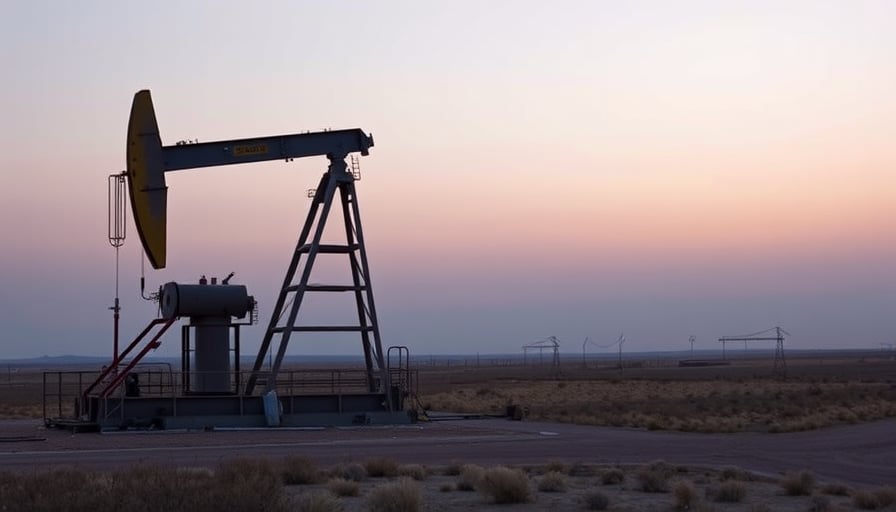Corporate News
Devon Energy Corp. (NASDAQ: DVN) disclosed its third‑quarter 2025 financial results on November 5. The company’s earnings per share and net profit declined relative to the same period in 2024, although total revenue showed a modest uptick. Devon also announced a quarterly dividend and refreshed its full‑year guidance. A conference call to review the results and discuss the outlook is scheduled for November 6.
Financial Performance
| Metric | Q3 2025 | Q3 2024 | YoY Change |
|---|---|---|---|
| Revenue | $6.1 billion | $6.0 billion | +1.7 % |
| Net income | $1.2 billion | $1.4 billion | –14.3 % |
| Diluted EPS | $2.45 | $2.90 | –15.5 % |
| Dividend per share | $0.15 | – | – |
The revenue rise reflects incremental production at Devon’s flagship Permian Eagle Ford assets, while the decline in earnings is attributed to higher operating costs, elevated royalty expenses, and a weaker benchmark price for U.S. crude. The company’s guidance for 2026 now projects gross margins of 29 % to 32 %, down from the previous 31 % to 34 % range.
Operational Highlights
Devon’s independent oil and gas portfolio remains concentrated in the United States, with core assets in the Permian Basin, Eagle Ford, and the Anadarko Basin. The company’s exploration and development strategy hinges on incremental drilling in high‑grade play zones and the deployment of advanced completion techniques to maximize recovery rates. Recent additions include a 10 % stake in a 150 boe/d gas field in the Marcellus Shale, aimed at diversifying production and enhancing natural‑gas sales to the Northeast market.
Transportation and processing activities continue to be managed through an integrated pipeline network that feeds directly into the company’s own processing terminals. Devon’s strategic partnership with a major pipeline operator has secured preferential access to key interstate corridors, reducing transportation bottlenecks that can depress realized prices.
Market Context
Supply‑Demand Fundamentals
In the broader U.S. energy market, the U.S. Energy Information Administration (EIA) projects crude oil demand to remain at a 2025 peak of 19.5 million barrels per day (mb/d) before a gradual decline as renewable generation gains market share. Devon’s production mix, which is still predominantly light‑sourcetype crude, positions the company favorably in a market where Brent and WTI have shown a price differential of approximately $1.75 per barrel in the last quarter. However, the narrowing spread, driven by increased refining throughput and inventory drawdowns, is exerting downward pressure on realized margins.
Natural‑gas demand is expected to rebound in 2026, with the EIA forecasting a 3.7 % annual increase as the power sector ramps up gas‑fired generation to compensate for intermittent solar and wind output. Devon’s gas assets will benefit from this trend, although the company’s gas sales are still constrained by limited pipeline capacity and the competitive landscape of midstream service providers.
Technological Innovations
Advancements in horizontal drilling and multi‑stage hydraulic fracturing have boosted Devon’s recovery factor by an average of 2‑3 % across its core fields, translating into a 5 % increase in netback per barrel. Moreover, the company is piloting an energy storage project involving a 100 MW/200 MWh lithium‑ion battery near its Eagle Ford terminal. The initiative aims to smooth out gas supply for the local power grid during peak demand periods, thereby creating an ancillary revenue stream.
On the renewable front, Devon has earmarked 1.5 GW of solar capacity for future development in Texas and the Midwest. The company plans to integrate solar‑generated electricity into its existing processing facilities, offsetting operational costs and reducing its carbon intensity.
Regulatory Impacts
Recent policy developments in the United States have introduced stricter emissions standards for oil and gas operations, notably the U.S. Environmental Protection Agency’s (EPA) updated methane emission limits. Devon’s compliance strategy includes the deployment of advanced gas‑capture technology and regular monitoring of well integrity, which are projected to increase operating expenditures by 1‑2 % over the next three years.
In addition, the Biden administration’s infrastructure agenda includes a $2 trillion investment in clean energy infrastructure, with a portion earmarked for grid modernization and storage solutions. Devon’s battery pilot project is positioned to qualify for federal incentives, potentially offsetting a portion of the capital outlay.
Outlook
Devon’s updated guidance reflects a cautious stance, citing potential headwinds from commodity price volatility, regulatory compliance costs, and a gradual transition to a more diversified energy portfolio. The company remains confident in its ability to manage production costs while capitalizing on emerging storage and renewable opportunities.
Investors will be closely monitoring the upcoming conference call on November 6 for further insight into capital allocation priorities, debt management, and the timeline for the solar and storage projects.
